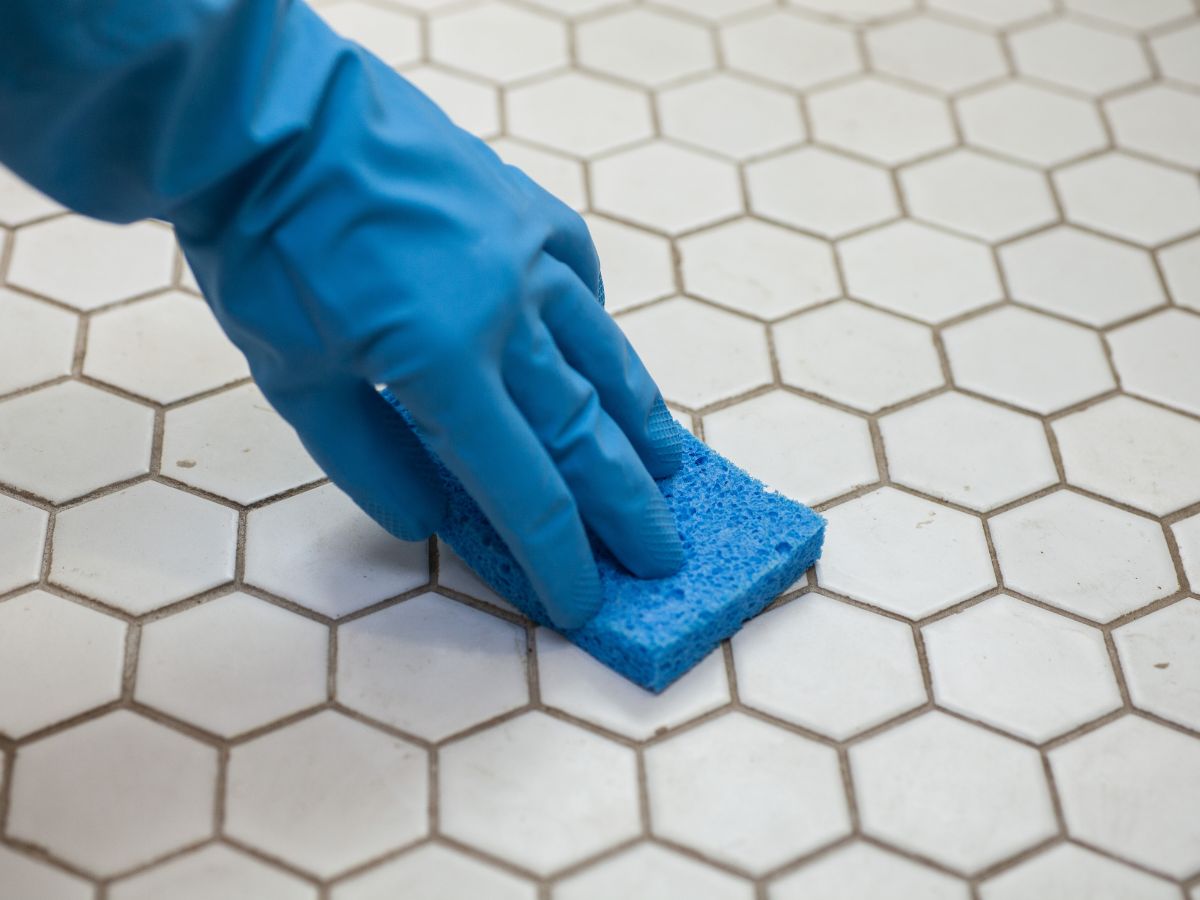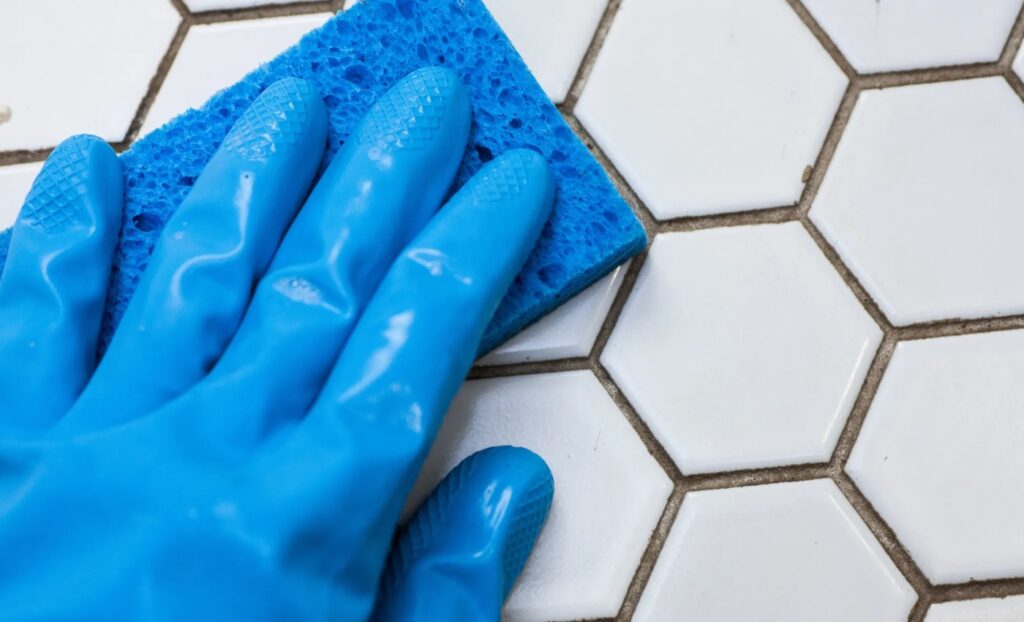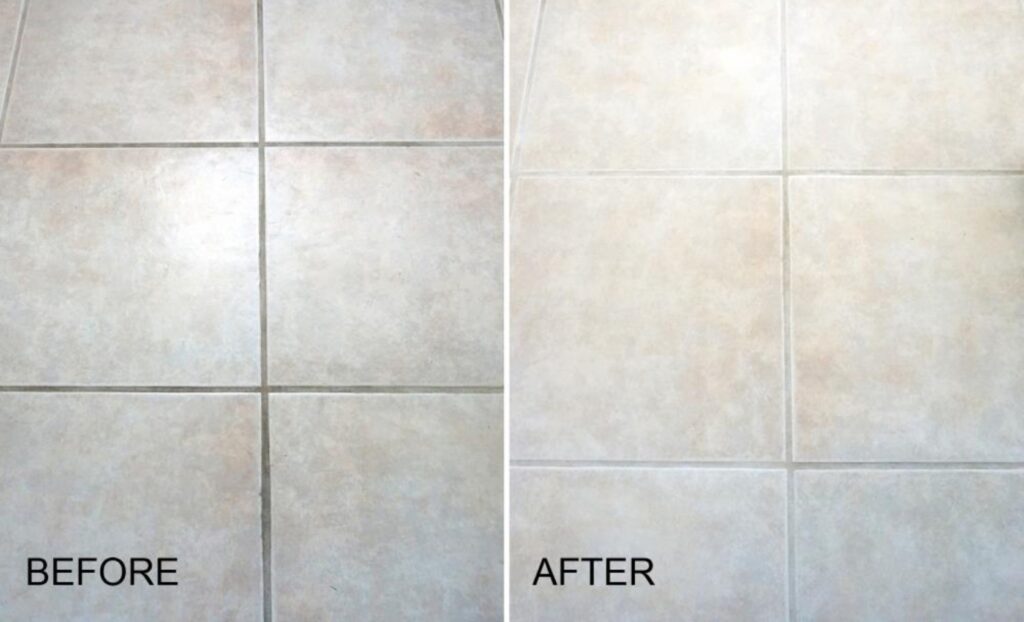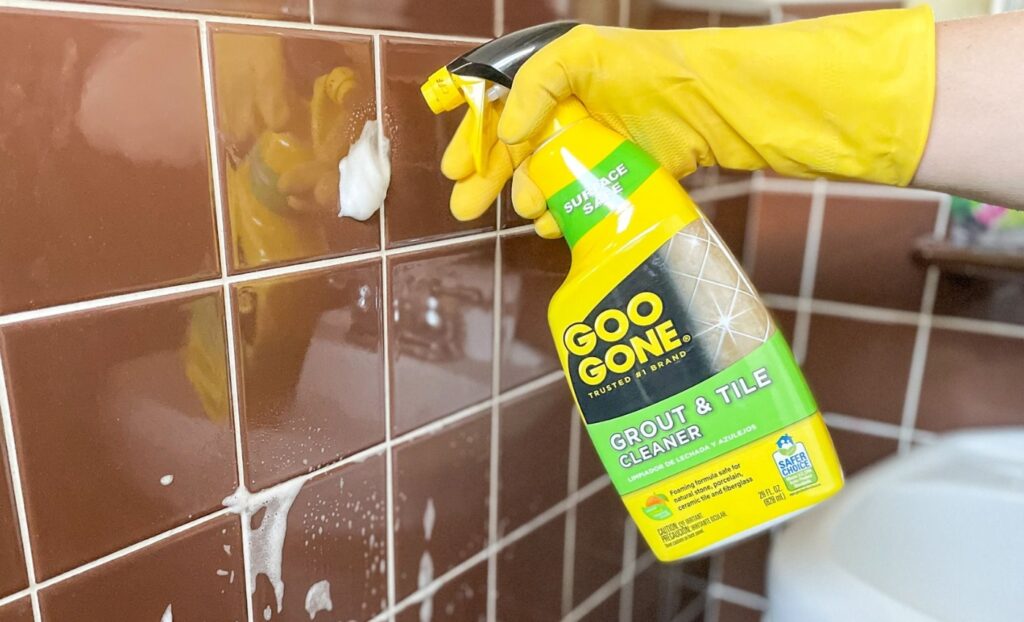If you’ve ever scrubbed away at those stubborn lines between your tiles, only to feel defeated by their resilience, this is the article for you. Grout may seem like a small detail in your home’s aesthetic, but it has a knack for attracting dirt and grime. delve into why grout is so difficult to clean […]

If you’ve ever scrubbed away at those stubborn lines between your tiles, only to feel defeated by their resilience, this is the article for you. Grout may seem like a small detail in your home’s aesthetic, but it has a knack for attracting dirt and grime. delve into why grout is so difficult to clean and share some expert tips and product recommendations that will have your grout looking fresh and fabulous once again. So grab your cleaning gloves and let’s dive right in!

What is grout, you ask? Well, it’s the unsung hero that fills the gaps between your tiles and keeps them firmly in place. Think of grout as a mortar-like substance that not only secures your tiles but also enhances their visual appeal by creating clean lines and defining the overall look of your flooring or walls.

Grout comes in various types, such as cement-based, epoxy-based, and urethane-based. Each type has its own unique properties and applications. Cement-based grout is commonly used for most residential tiling projects due to its affordability and versatility. Epoxy-based grout, on the other hand, offers superior stain resistance and durability but can be more challenging to work with.
The composition of grout typically includes a mixture of water, cement or resin binder, sand or filler material, and sometimes additives for improved performance. This combination creates a paste-like consistency that makes it easy to apply between tiles while hardening over time to provide stability.
Now that we have a basic understanding of what grout is let’s explore why this seemingly innocuous material presents such a cleaning challenge!

Grout is a material that is commonly used to fill the gaps between tiles and seal them in place. It plays a crucial role in ensuring that tiles are secure and water-resistant. But have you ever wondered what grout is actually made of?
The composition of grout can vary depending on the type, but it generally consists of a mixture of cement, sand, and water. These ingredients are blended together to create a thick paste-like substance that hardens over time.
Cement acts as the binding agent in grout, providing strength and durability. Sand helps to improve its texture and prevent shrinkage cracks from forming as the grout dries. And water is added to initiate the chemical reaction that allows the grout to set.
In addition to these main components, some types of grout may also contain additives such as latex or polymer resins. These additives help enhance flexibility, adhesion, and stain resistance properties.
Understanding the composition of grout gives us insight into why it can be so challenging to clean. The porous nature of grout makes it prone to absorbing dirt, stains, and moisture over time. This can lead to discoloration and make cleaning efforts more difficult.
Moreover, because grout lines are often recessed compared to tiled surfaces, they tend to accumulate debris more easily than smooth tile surfaces.
To effectively clean grout, specialized products designed for this purpose can be used along with regular scrubbing using a brush or sponge. These products typically contain bleach or other powerful cleaning agents that penetrate deep into the pores of the grouted surface.
Regular maintenance and proper sealing after installation can also help minimize staining and make future cleaning tasks less arduous.
So next time you find yourself faced with grimy or discolored grouting lines on your beautiful tiled floors or walls, remember that understanding its composition will give you valuable insights into how best to tackle those stubborn stains!

Grout, that seemingly innocent substance between your tiles, has the uncanny ability to defy all cleaning efforts and remain stubbornly dirty. But why is grout so difficult to clean? Let’s explore.
Grout is made up of a mixture of materials such as cement, sand, and water. This composition makes it porous and prone to absorbing stains and dirt over time. Unlike tiles which have a smooth surface that can be wiped clean easily, grout provides a textured surface for stains to cling onto.
Grout lines are often narrow and hard to reach with traditional cleaning tools. Scrubbing away at these tiny crevices can be tedious and time-consuming. Moreover, the rough texture of the grout means that dirt particles get trapped more easily in its uneven surface.
Additionally, improper maintenance or neglecting regular cleaning can worsen the situation. Over time, mold and mildew may start growing in damp areas of your bathroom or kitchen where moisture tends to accumulate. These growths not only discolor the grout but also make it even more challenging to clean due to their stubborn nature.
So how can you tackle this daunting task? Regular cleaning is key! Use a brush with stiff bristles specifically designed for scrubbing grout lines along with an effective cleaning solution. Alternatively, you could try using natural remedies like vinegar or baking soda mixed with water for a DIY approach.
There are also various commercial products available specifically formulated for tackling tough grime on grout surfaces. Look for cleaners containing bleach or oxygenated bleach as they tend to be more effective against deeply ingrained stains.

Now that we understand why grout can be such a pain to clean, let’s dive into some helpful tips to make the process a little easier.
One of the best ways to keep your grout looking clean is by preventing dirt and stains from settling in the first place. Regularly sweep or vacuum your tiled areas, and wipe up spills immediately.
Harsh chemicals can damage both your grout and tiling, so opt for mild cleaners instead. A mixture of baking soda and water or vinegar works wonders on stained grout.
When it comes to scrubbing away tough stains, use a soft-bristle brush or an old toothbrush specifically designed for cleaning grout lines. Apply moderate pressure and scrub in circular motions.
If you have access to a steam cleaner, this can be an effective method for deep-cleaning grout without using any harsh chemicals. The high temperature helps break down stubborn dirt and bacteria.
To maintain clean-looking grout over time, consider applying a sealer after cleaning it thoroughly. This will help protect against future staining and make routine cleaning easier.
Remember that patience is key when it comes to cleaning grout – don’t rush through the process as it may lead to unsatisfactory results or even damage your tiles or flooring surfaces!

When it comes to cleaning grout, having the right products can make all the difference. There are numerous options available in the market specifically designed to tackle those stubborn stains and discoloration that plague your grout lines.
One popular choice is a grout cleaner with bleach, which is highly effective in removing tough stains and killing mold and mildew. However, be cautious when using bleach as it can damage certain types of grout or colored tiles.
Another option worth considering is an oxygenated cleaner. These cleaners work by releasing oxygen ions that break down dirt and stains on a molecular level. They are generally safe to use on most types of grout, but always check the label for instructions.
For eco-conscious individuals, there are also natural alternatives such as vinegar or baking soda. Vinegar’s acidic properties help dissolve mineral deposits and remove soap scum from grout surfaces. Baking soda acts as a gentle abrasive that aids in scrubbing away dirt without causing damage.
In addition to these traditional options, there are now specialized grout cleaning brushes available that make the task much easier. These brushes usually have stiff bristles designed to reach into tight spaces between tiles and effectively agitate the grime out of the grooves.
Remember to always follow product instructions carefully and test any new cleaner on a small inconspicuous area before applying it widely across your tile floor or wall. It’s essential to find a product that suits your specific needs while being mindful of any potential risks associated with certain chemicals or ingredients.
By exploring different products on offer today, you can discover what works best for your particular type of grout and achieve clean, fresh-looking surfaces throughout your home!
Cleaning grout can be a challenging and time-consuming task. The composition of grout, with its porous nature and propensity to trap dirt, stains, and moisture, makes it difficult to maintain its original cleanliness. However, with the right techniques and products, you can restore your grout to its former glory.
To effectively clean grout, start by using natural remedies such as vinegar or baking soda mixed with water. These gentle yet powerful solutions can help break down dirt and stains without damaging the grout. For tougher stains or deeply ingrained dirt, consider using commercial cleaning products specifically designed for grout.
Remember to always scrub gently when cleaning grout to avoid causing any damage. Use a soft brush or toothbrush in circular motions to lift away stubborn debris. Additionally, regular maintenance is key in preventing future buildup on your grouting lines.
In conclusion (without explicitly stating so), while cleaning grout may require some effort and patience on your part, the results are well worth it. By following these tips and incorporating them into your cleaning routine regularly, you can keep your tiles looking fresh and ensure that your home remains a clean sanctuary for years to come!

As the admin of Sparkling & Beyond, I bring a wealth of knowledge and passion for excellence in the cleaning industry. With years of experience in providing top-notch cleaning solutions, I am dedicated to sharing valuable insights and tips to help maintain pristine and healthy living environments. My mission is to ensure every home and office we service sparkles with cleanliness and comfort.
![]()